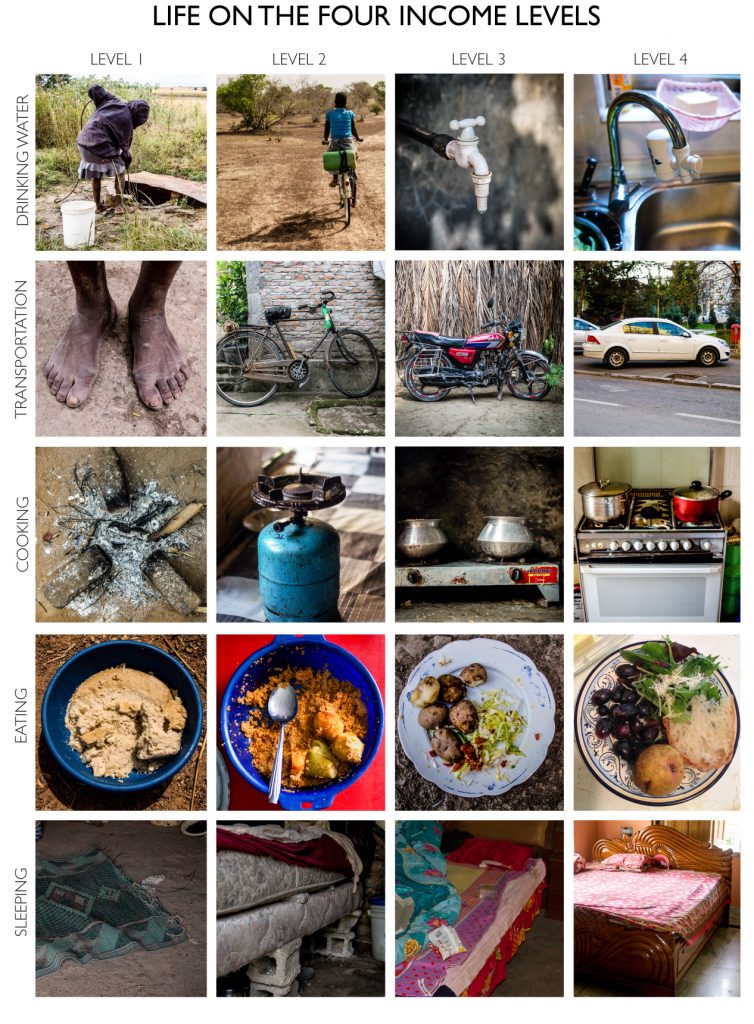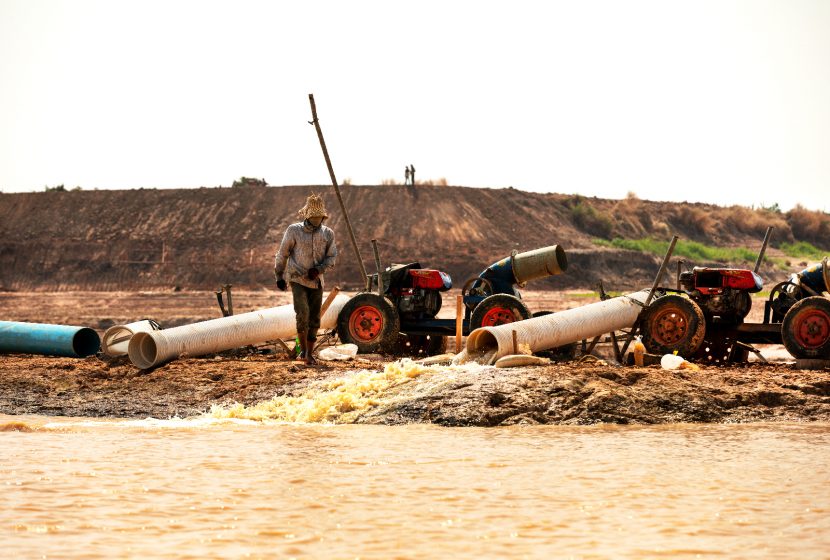Roughly 1 billion people live in extreme poverty. That’s nearly 15% of the earth’s population. Family units in this group have an average of five children and must cover their needs on $1 US a day. Even those who rise above this lowest income marker and reach the next level described in Hans Rosling’s book Factfulness only make $4 – $15 US a day. This second tier of income is a far cry from the $32 US daily budget considered to be the start of a privileged lifestyle, but it still represents a significant upgrade to the first tier of poverty.
Looking at the lifestyles and income realities of such a large portion of the population in terms of mere dollars per day can help us better understand the impact even a modest contribution can have.
“Money and health go hand in hand,” says Hans Rosling, “Longer lives come from higher income. More income goes hand in hand with longer average schooling, with young women marrying later, and with a greater share of income going toward recreation.”
With help from Rosling’s work, let’s take a look at what these lives look like and how they can be changed:

Level 1
If you live on Level 1 with $1-2 a day, your five children may have to spend hours walking barefoot with your single plastic bucket, back and forth, to fetch water from a dirty mud hole an hour’s walk away. On the way home, they gather firewood, and you prepare the same gray porridge that you’ve been eating at every meal, every day, for your whole life—except during the months when the meager soil yielded no crops and you went to bed hungry.
One day, one of your young children develops a nasty cough. Smoke from the indoor fire is weakening her lungs. You can’t afford antibiotics, and one month later, she is dead. This is extreme poverty. Yet you keep struggling on. If you are lucky and the yields are good, you can maybe sell some surplus crops and manage to earn more than $4 a day, which would move you to Level 2.
Level 2
If you earn $4 a day, you can afford chickens, which means eggs. You save some money and buy sandals for your children, and then a bike, and then more plastic buckets. Now it takes you only half an hour to fetch water for the day. You buy a gas stove so your children can attend school instead of gathering firewood. When there’s power in your home, they do their homework under a bulb. But the electricity is too unstable for a freezer.
You save up for mattresses, so you don’t have to sleep on the mud floor. Life is much better now but still very uncertain. A single illness and you would have to sell most of your possessions to buy medicine. That would throw you back into Level 1 again.
Level 3
If you work multiple jobs, 16 hours a day, seven days a week, and manage to quadruple your income again to $8-16 a day, you can save to install a cold-water tap. No more fetching water. With a stable electric line, the kids’ homework improves, and you can buy a fridge that lets you store food and serve different dishes each day.
You save to buy a motorcycle, which means you can travel to a better-paying job at a factory in town. Two of your children start high school. If they manage to finish, they will be able to get better-paying jobs than you have ever had. However, if anyone gets injured, you’ll have to use the money you’ve saved for your children’s education to pay for medical bills.
Advancing Life is helping make an impact
The Advancing Life Foundation has witnessed firsthand how a few dollars can uplift families and entire communities. The villages where the foundation has been sending aid and volunteers would be considered Level 1 on the poverty scale. In Cambodia, a clean freshwater well means that a family will be significantly less likely to have a child fall ill. It also means that they can use the water to grow crops and sell them, making more money for their family to buy shoes, clothing, school supplies, medical treatments, and medicine.
The cost of a freshwater well through Vision Cambodia is roughly $375 and provides clean water for a village of hundreds of people for years on end. The water is used for bathing, cooking, cleaning, and drinking. If we divide the cost of one freshwater well for 100 people, it comes out to $3.75 per person and will improve their quality of life drastically.
Breaking down the cost of daily living for those in need gives us a little more perspective on what a difference a donation can make for someone. Even a few dollars can change a life. Donate to Advancing Life Foundation today to help us fund essential initiatives worldwide that are changing the lives of so many in need. ASEA is matching every dollar donated to the foundation, which means your dollar will have double the impact in changing the world.


